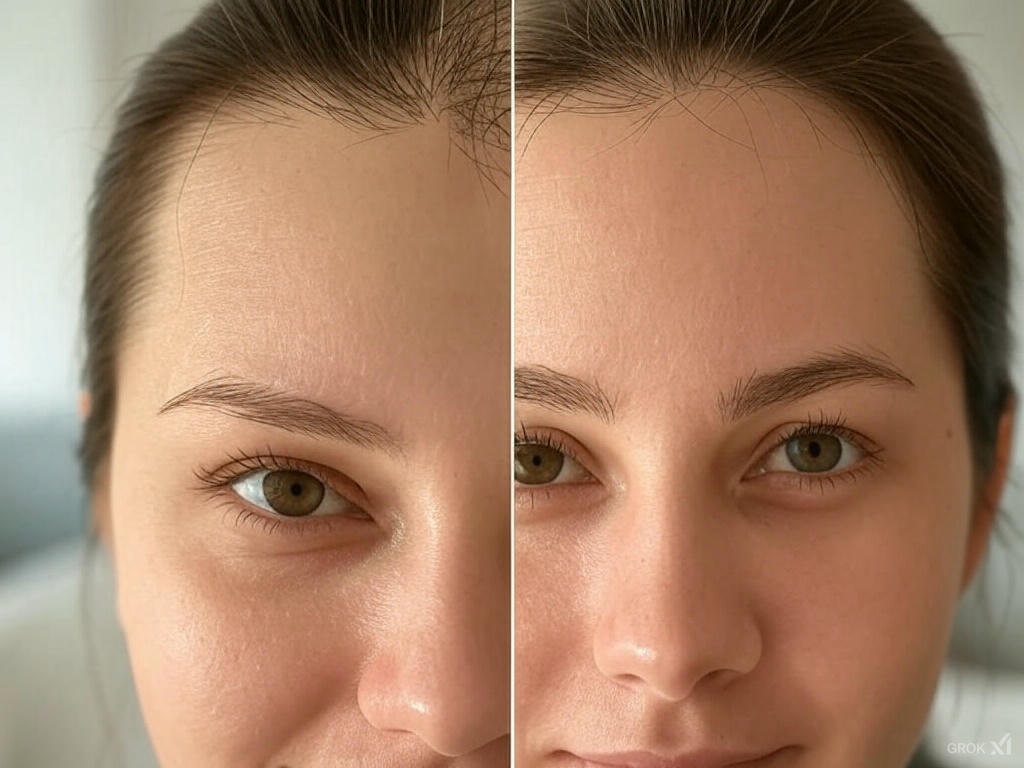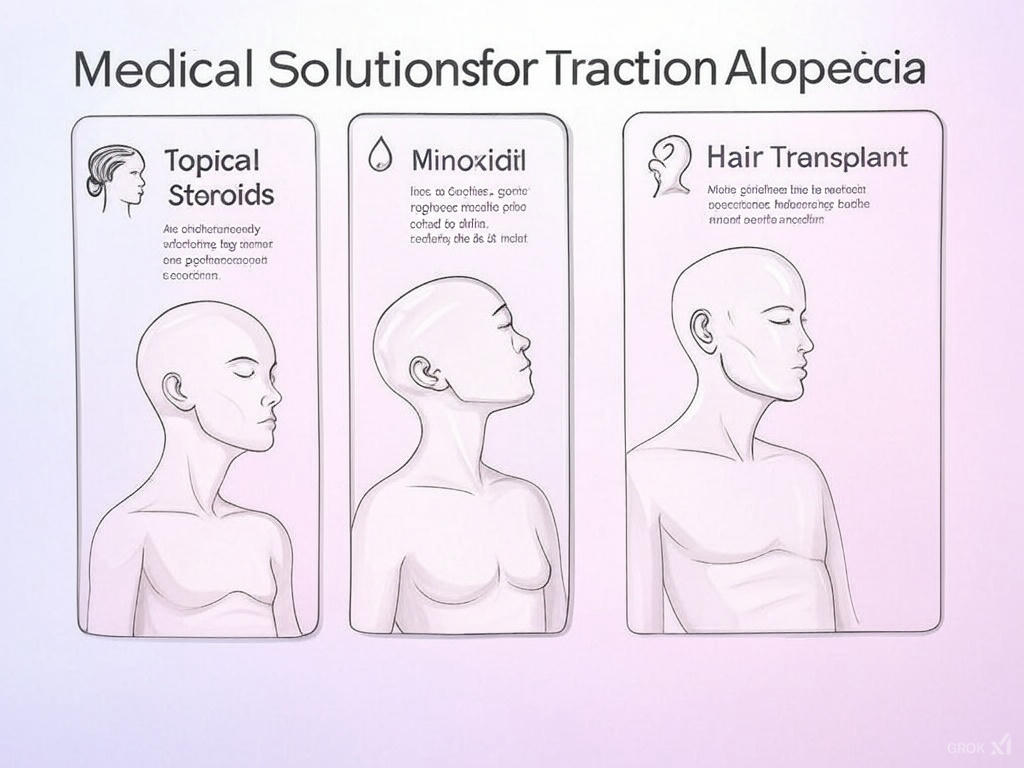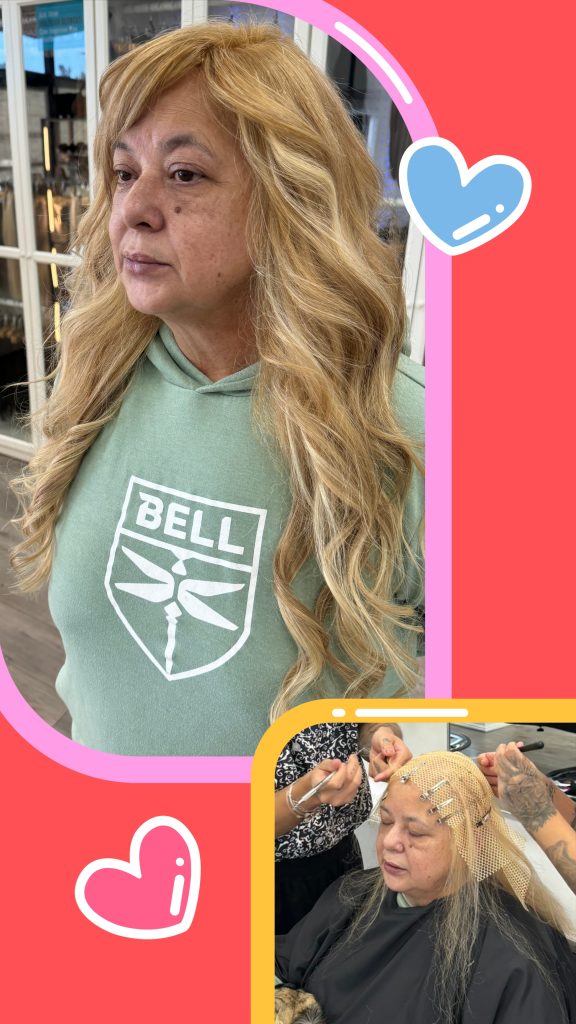1500+ ★★★★★ REVIEWS
Understanding Traction Alopecia: Causes, Treatments, and Solutions

Traction alopecia is a form of hair loss that occurs when hair is subjected to prolonged or repeated tension, often due to tight hairstyles or improper hair care practices. While it can affect anyone, it’s particularly prevalent among individuals who frequently wear styles like tight ponytails, braids, or extensions that pull on the scalp. Left unaddressed, this condition can lead to permanent hair loss, but with early intervention, it’s often reversible. In this article, we’ll explore the causes, symptoms, and both medical and non-medical solutions for traction alopecia, offering practical advice and expert-backed insights.
Table of Contents
What Is Traction Alopecia?
Traction alopecia is a type of hair loss caused by mechanical stress on the hair follicles. Unlike other forms of alopecia, such as androgenetic alopecia (pattern baldness), it’s not rooted in genetics or hormonal changes but rather in physical damage from pulling. The condition was first identified in the early 1900s in Greenland, where women wearing tight ponytails experienced hairline recession, according to Healthline. Over time, this repeated tension weakens the hair shaft, damages the follicle, and can halt hair regrowth if scarring occurs.
Commonly affected areas include the hairline, temples, and sides of the scalp, though the pattern depends on the hairstyle causing the stress. A key diagnostic feature, known as the “fringe sign,” refers to the short, fine hairs that remain along the hairline even as longer hairs are lost, as noted by the British Skin Foundation.
Causes of Traction Alopecia

The primary cause of traction alopecia is repetitive pulling on the hair, often from styling habits. Here are some common culprits:
- Tight Hairstyles: Ponytails, buns, braids, cornrows, and dreadlocks that are pulled too tightly can strain the scalp. This is especially common among African-American women due to cultural hairstyling practices, as highlighted in a study from the National Institutes of Health (NIH).
- Hair Extensions and Weaves: When applied incorrectly or worn for extended periods, extensions can exert constant pressure on natural hair.
- Wigs: Ill-fitting wigs or those secured with glue can tug at the hairline, warns InStyle.
- Chemical Treatments: Relaxers or perms combined with tight styles increase hair fragility, amplifying the risk, per Wig Medical.
Other factors include heavy headgear (like helmets) or even the weight of very long hair pulling on the scalp over time.
Symptoms to Watch For
Traction alopecia often starts subtly but progresses if the tension continues. Early signs include:
- Small bumps or pimples on the scalp resembling folliculitis.
- Redness, itching, or soreness where the hair is pulled.
- Broken or missing hairs, especially along the hairline or temples.
As the condition advances, you may notice thinning or bald patches. In chronic cases, the follicles scar, leading to shiny, smooth areas where hair no longer grows, a stage known as scarring alopecia, according to Cosmopolitan.
Medical Solutions for Traction Alopecia

If caught early, traction alopecia can often be reversed with medical intervention and lifestyle changes. Here are some evidence-based treatments:
- Stop the Tension: The first step is to eliminate the source of pulling. Switch to looser hairstyles and avoid tight accessories. The NIH emphasizes that halting traction is critical for regrowth.
- Topical Steroids: Dermatologists may prescribe these to reduce inflammation and swelling on the scalp, as recommended by Healthline.
- Antibiotics: If open sores or infections develop, antibiotics can prevent further damage.
- Minoxidil: This topical treatment, often used for pattern baldness, may stimulate regrowth in early-stage traction alopecia, though results vary.
- Hair Transplant Surgery: For irreversible cases, transplanting healthy follicles from another part of the scalp can restore the hairline. Success rates are high for traction alopecia, per Cosmopolitan.
Consulting a dermatologist or trichologist is essential to tailor these treatments to your specific needs.
Non-Medical Solutions: Enhancing Confidence

For those seeking immediate aesthetic solutions or dealing with permanent hair loss, non-medical options can restore volume and confidence. These include:
- Mesh Integration: This technique weaves a custom hairpiece into your existing hair, blending seamlessly for a natural look. It’s ideal for thinning areas and is offered by experts like those at Hottie Hair Salon & Extensions Store.
- Hair Toppers: Smaller than wigs, toppers clip onto the scalp to cover thinning spots or add volume. Explore options at Hottie Hair for high-quality, customizable pieces.
- Wigs: Full wigs provide complete coverage and versatility. Opt for breathable, well-fitted designs to avoid further tension, available through Hottie Hair Salon.
- Cosmetic Camouflage: Hair fibers or pigmented sprays can temporarily conceal thinning areas.
For professional application and personalized styling, Hottie Hair Salon & Extensions Store in Las Vegas is a top recommendation. Their expert stylists offer consultations to match toppers, wigs, or extensions to your natural hair, ensuring a flawless finish.
Prevention Tips
Preventing traction alopecia is straightforward with mindful habits:
- Avoid tight hairstyles and opt for loose, low-tension styles.
- Limit chemical treatments and heat styling to reduce hair fragility.
- Choose wigs and extensions with care—ensure proper fit and installation by professionals, like those at Hottie Hair.
- Give your scalp regular breaks from extensions or wigs to allow recovery.

Conclusion
Traction alopecia is a preventable yet often overlooked condition that stems from everyday styling choices. By recognizing the signs early and adjusting habits, you can halt its progression and even reverse the damage. For those with advanced cases, a blend of medical treatments and non-medical solutions like mesh integration, toppers, and wigs offers hope and confidence. Whether you’re seeking prevention tips or a transformative hairpiece, trusted providers like Hottie Hair Salon & Extensions Store can guide you toward healthier, fuller hair. Take control of your hair health today—your scalp will thank you.
FAQ: Traction Alopecia Answered
- What is traction alopecia?
Traction alopecia is hair loss caused by repeated pulling or tension on the hair follicles, often from tight hairstyles like braids or ponytails, as explained by Healthline. - Who is most at risk for traction alopecia?
It’s most common among people with textured hair, such as African-American women, due to tight styling practices, and those in professions like ballet or gymnastics, per the NIH. - Can traction alopecia be reversed?
Yes, if caught early and the tension is stopped, hair can regrow. Chronic cases may become permanent due to follicle scarring, notes Cosmopolitan. - What are the early signs of traction alopecia?
Look for scalp bumps, redness, or broken hairs along the hairline, as outlined by Wig Medical. - What medical treatments are available?
Options include topical steroids, antibiotics for infection, minoxidil, or hair transplants for severe cases, according to Healthline. - How can mesh integration help?
Mesh integration blends a hairpiece with your natural hair for volume and coverage, a solution offered by Hottie Hair Salon. - Are hair toppers a good solution?
Yes, toppers add volume or conceal thinning areas discreetly. Find quality options at Hottie Hair. - Can wigs prevent further damage?
Properly fitted wigs can protect your scalp if they don’t pull. Explore styles at Hottie Hair Salon. - How do I prevent traction alopecia?
Avoid tight styles, limit chemicals, and ensure extensions are applied correctly. - Where can I get non-medical solutions?
Visit Hottie Hair Salon & Extensions Store in Las Vegas for expert consultations, toppers, wigs, and mesh integration tailored to your needs.
You must be logged in to post a comment.